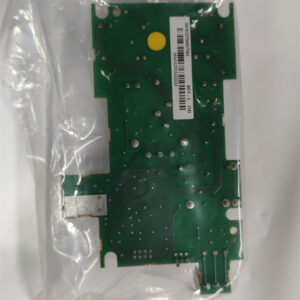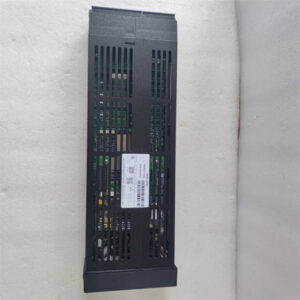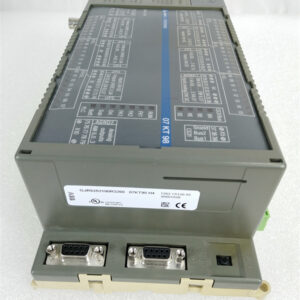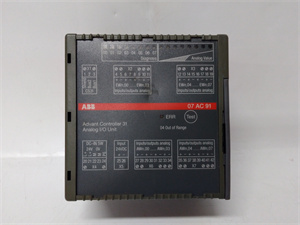Description
Detailed parameter table
| Parameter name | Parameter value |
| Product model | PFEA112 – 65 3BSE050091R65 |
| Manufacturer | ABB |
| Product category | Compact Tension Measurement Unit |
| Inputs | 2 load cells input |
| Outputs | Voltage and current output (A + B) |
| Measuring range | Configurable according to the connected load cells, suitable for a wide range of tension applications |
| Accuracy | High – precision measurement, with accuracy depending on the connected load cells and calibration |
| Communication interface | Supports standard industrial communication protocols such as Modbus RTU for seamless integration with other devices in the automation network |
| Operating temperature | – 10 °C to + 55 °C, suitable for a variety of industrial environments |
| Dimensions (LxWxH) | 13 cm x 21.6 cm x 10.2 cm, designed for compact installation in control cabinets |
| Power supply | 100 – 240 V AC, providing flexibility in power source options |
| Certification | Complies with relevant international standards for industrial use, ensuring reliability and safety |
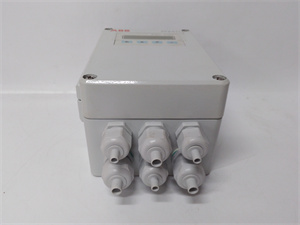
PFEA112-65 3BSE050091R65
Product introduction
The ABB PFEA112 – 65 3BSE050091R65 is a compact yet powerful tension measurement unit that plays a crucial role in industrial processes where precise tension control is essential. As part of ABB’s comprehensive range of automation solutions, this unit is engineered to meet the demands of modern manufacturing environments.
It is designed to interface with two load cells, which are used to measure the tension in materials such as wires, films, textiles, and paper. By accurately converting the mechanical tension detected by the load cells into electrical signals (voltage and current output), the PFEA112 – 65 enables real – time monitoring and control of tension levels. This information can then be used to adjust the operation of various machinery, such as unwinding, winding, and processing equipment, ensuring that the tension remains within the desired range. The unit’s compact size makes it suitable for installation in space – constrained control cabinets, while its robust construction ensures reliable operation in harsh industrial conditions.
Core advantages and technical highlights
User – friendly configuration: The PFEA112 – 65 comes with step – by – step menus that simplify the setup process. Even operators with limited technical knowledge can easily configure the unit to suit their specific application requirements. For example, in a small – scale packaging factory, the machine operators were able to set up the tension measurement unit within an hour, reducing the downtime associated with new equipment installation.
Predefined standard measurement modes: It offers a range of predefined measurement modes, which are optimized for different types of materials and industrial processes. This feature eliminates the need for complex manual calibration in many common applications. A textile mill was able to quickly switch between measurement modes for different yarn thicknesses, saving valuable production time.
Flexible analog/digital inputs and outputs: The unit provides easy – to – configure analog and digital inputs and outputs. This flexibility allows it to interface with a wide variety of sensors, actuators, and control systems. In a wire manufacturing plant, the digital inputs were used to receive signals from proximity sensors, while the analog outputs were used to control the speed of the wire – drawing machine based on the tension readings.
Level detectors integration: Built – in level detectors can be integrated with the PFEA112 – 65 to monitor the level of materials in tanks or hoppers. This integration is useful in processes where maintaining a consistent material supply is critical for proper tension control. In a paper mill, the level detectors were used to ensure a continuous supply of pulp, which in turn affected the tension of the paper during production.
Unit selection: It supports multiple unit selections (N, kN, mN, kp, t, lb, T), making it convenient for operators in different regions or industries to work with familiar units. A packaging company that exports its products globally found this feature extremely useful as it could display tension values in the units preferred by its international customers.
Simulation mode: The simulation mode allows for easy checking of system integration. Before fully commissioning a new production line, operators can use the simulation mode to test the functionality of the tension measurement unit and its interaction with other components in the system. This reduces the risk of errors during actual production and helps in identifying and resolving any integration issues in advance.
Typical application scenarios
Paper industry: In a paper mill, the PFEA112 – 65 is used to control the tension of the paper during the production process. By continuously monitoring the tension as the paper moves through various rollers and processing stages, it ensures that the paper has a consistent thickness and quality. This helps in reducing paper breaks and improving the overall efficiency of the paper – making process. For instance, a large – scale paper mill reported a 15% reduction in paper waste after implementing the PFEA112 – 65 tension measurement unit.
Textile industry: In textile manufacturing, the unit plays a vital role in controlling the tension of yarn or fabric. Maintaining the right tension is crucial for producing high – quality textiles without defects such as uneven weaves or stretched fibers. A weaving factory used the PFEA112 – 65 to precisely control the yarn tension, resulting in a 20% improvement in fabric quality and a decrease in the number of rejected products.
Film industry: In the production of plastic films, the PFEA112 – 65 is employed to control the tension of the film materials. This ensures that the film has a uniform flatness and thickness, which are essential for applications such as packaging and lamination. A film – manufacturing company noticed a significant reduction in film defects after installing the tension measurement unit, leading to higher customer satisfaction.
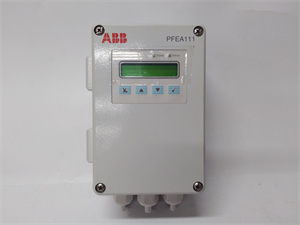
PFEA112-65 3BSE050091R65
Related model recommendations
PFEA111 – 65 3BSE050091R65: A similar tension measurement unit with a slightly different feature set. It may be a more cost – effective option for smaller – scale operations that do not require all the advanced features of the PFEA112 – 65.
PFEA113 – 65 3BSE028144R0065: This model offers enhanced processing capabilities and additional communication options. It is suitable for larger – scale industrial plants where high – speed data processing and extensive network connectivity are required.
PFTL301E 3BSE019050R1000 1.0KN (previously described load cell): Can be paired with the PFEA112 – 65 to form a complete tension measurement and control solution. The load cell accurately measures the tension, and the PFEA112 – 65 processes the data and provides control signals.
CI854: A communication module that can be used to expand the communication capabilities of the PFEA112 – 65. It enables the unit to communicate with other devices in the industrial network using protocols such as Profibus – DP.
TC500: An ABB calibration tool that can be used to verify and calibrate the accuracy of the PFEA112 – 65 and the connected load cells. Regular calibration using this tool ensures reliable and accurate tension measurement.
Installation, commissioning and maintenance instructions
Installation preparation: Mount the PFEA112 – 65 in a suitable control cabinet using the provided mounting brackets. Ensure that the installation location is clean, dry, and free from excessive electromagnetic interference. Connect the power supply wires to the appropriate terminals, following the color – coding or pin – out diagram provided in the user manual. Connect the two load cells to the input ports of the unit, making sure the connections are secure. Route the communication cables (if applicable) away from high – voltage lines to prevent interference. Before powering on the unit, double – check all connections to avoid short – circuits and incorrect wiring.
Commissioning: Power on the PFEA112 – 65 and follow the step – by – step setup instructions in the user interface. Select the appropriate measurement mode, unit of measurement, and configure the analog/digital inputs and outputs according to your application requirements. Calibrate the unit using a known tension source or the connected load cells’ calibration procedures. Test the functionality of the unit by applying different levels of tension and verifying that the output signals are correct.
Maintenance suggestions: Regularly inspect the PFEA112 – 65 for any signs of physical damage, such as cracks or loose connections. Clean the unit periodically using a soft, dry cloth to remove dust and debris. Check the communication links to ensure that data is being transmitted correctly. Annually verify the accuracy of the unit using the TC500 calibration tool. If any drift or inaccuracies are detected, recalibrate the unit according to the calibration procedures. Replace any faulty components, such as input/output modules or communication interfaces, in a timely manner. Keep spare parts on hand for quick replacement in case of component failures.
Service and guarantee commitment
ABB offers a comprehensive service and guarantee for the PFEA112 – 65 3BSE050091R65. The product comes with a standard 2 – year warranty, during which any manufacturing defects will be covered. ABB’s global technical support team is available 24/7 to provide assistance with installation, commissioning, and troubleshooting. They can offer detailed guidance and solutions to ensure the proper operation of the unit. ABB also ensures the long – term availability of spare parts, minimizing downtime in case of component failures. Additionally, customers can access ABB’s online resources for firmware updates, product documentation, and technical training. This commitment reflects ABB’s confidence in the quality and reliability of the PFEA112 – 65 and its dedication to providing a seamless experience for industrial customers.
Full 12-month warranty on all components
Dedicated after-sales support
Same-day dispatch on 1000s of parts
All units are fully tested
- 1. Email confirmation
You will get an email confirming that we have received your enquiry. - 2. Dedicated Account Manager
One of our team will be in touch to confirm your part(s) specification and condition. - 3. Your quote
You will receive a comprehensive quote tailored to your specific needs.
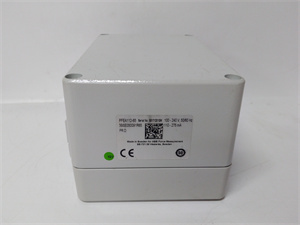
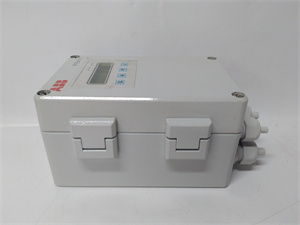
 Full 12-month warranty
Full 12-month warranty Available for dispatch immediately
Available for dispatch immediately We deliver worldwide
We deliver worldwide Full 12-month warranty on all components
Full 12-month warranty on all components